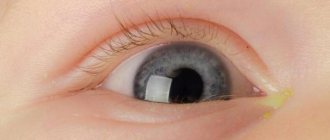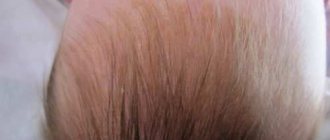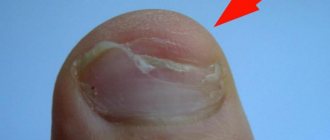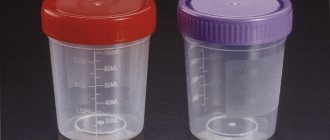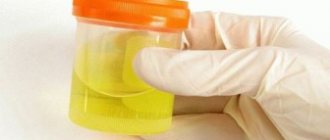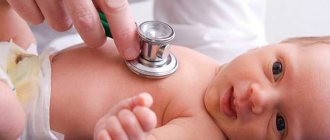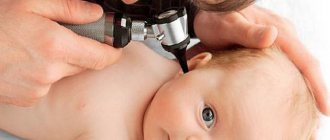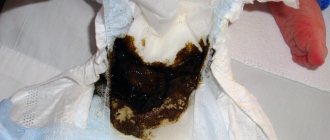In the first weeks after discharge from the hospital, parents do not leave their baby for almost a minute. And they are extremely concerned if they notice that the baby’s eye suddenly begins to “sour”; they often turn to the pediatrician with the question of why the baby’s eye is watering. The reasons may be different. Sometimes this phenomenon ends as suddenly as it begins. But sometimes the appearance of clear discharge is a symptom of a serious disease that requires immediate diagnosis and treatment.
Tears are a common occurrence for any person. But not for a newborn baby. After all, his tear ducts have not yet formed; this will happen only in the second or third month of life. Why do tears appear? Moms and dads should not panic, you just need to come and see a doctor for an examination.
Allergy
"Crying" symptoms may be the result of exposure to an allergen. In this case, the child also experiences itching and irritation. He is capricious and cries for any reason. A severe runny nose appears and snot is constantly released. The cause may be environmental factors or the diet of the newborn's mother if she is breastfeeding. Contact a specialist and get tested. Eliminate sweets and fatty foods from food, then food allergies will disappear, the child’s runny nose and lacrimation will go away. Material about allergies in newborns.
Eczema
Accompanied by dry skin, peeling of the eyelids. The eyes become sour, the child is nervous and constantly capricious. If you remove allergens and systematically use special creams (La-Cri, Elidel) and emulsions, then the disease can be overcome. The itching will go away, the skin will become velvety, painful tear discharge will stop.
Eczema is accompanied by dry skin, peeling eyelids
Anomaly of the tear ducts
The channels have a non-standard shape and become inflamed.
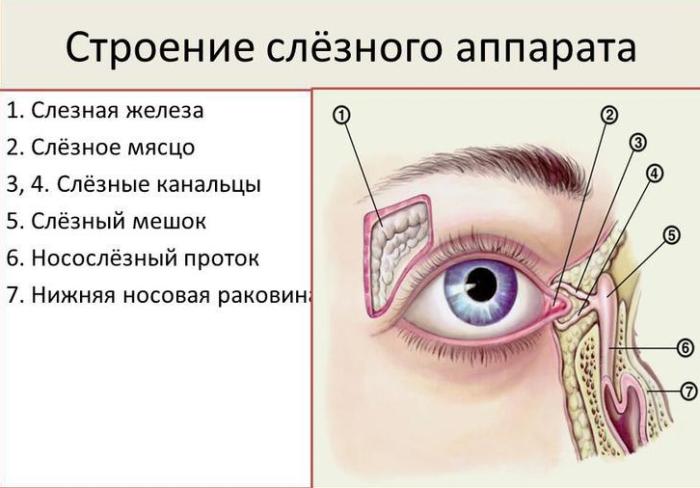
Tear ducts have an unusual shape and become inflamed
These include fistulas, diverticula, and aplasia:
- A lacrimal sac fistula is a fistula, that is, an opening through which tears or accumulations of pus are constantly released. Treatment is carried out by cutting or burning under local anesthesia.
- Diverticulum is a rare pathology that causes souring of the eyes. This is a protrusion of the lacrimal sac, affecting the lacrimal outflow.
- Aplasia is the absence of the lacrimal gland and can be cured surgically.
Diagnosis of lacrimal canal obstruction – dacryocystitis
It is possible to recognize the symptoms of the disease in a timely manner by carefully monitoring the baby.
- There is a tear in the child's eye in a calm state.
- Lacrimation from the first days of life.
- Mucous and mucopurulent discharge from the eye.
- Redness of the conjunctiva at the inner corner of the eye.
- Specific symptoms are mucopurulent discharge from the child’s eye with pressure on the area of the lacrimal sac, the positive effect of the use of antibacterial and antiseptic agents is unstable (appears again when they are discontinued), ophthalmologists perform the Vesta test (negative in the presence of the disease).
- Tubular test. One or two drops of Collargol solution are dripped into the child's eye. If the eyeball turns white, then the tear duct is passing. Obstruction is noted if the staining of the eyeball lasts more than five minutes. Detection of Collargol in the nose a few minutes after instillation into the eye confirms the positive result of the test.
- For children with suspected diseases of the lacrimal ducts, a comprehensive examination is recommended.
- They find out from the mother how the pregnancy and childbirth proceeded, and whether there is a hereditary predisposition to dacryocystitis.
- A smear is taken to test the bacterial flora and sensitivity to antibacterial agents. The study allows us to select effective drugs that act on a particular type of pathogen.
- Rhinoscopy is an examination of the nasal cavity with a special apparatus in order to exclude diseases of the nose or pathologies in its structure. Diseases of the maxillary sinuses, polyps, adenoids, narrowness of the nasal passages, and deviated nasal septum are excluded.
Conjunctivitis
This is inflammation of the visual organs. This disease often occurs in children aged one to six months; its mild form is not dangerous. If you notice that your baby's eyes are watery, this could be the cause. With conjunctivitis, swelling of the eyelids is observed, the child constantly rubs the reddened whites. There is purulent discharge and lacrimation, snot, and photophobia.
You should immediately show your little one to an ophthalmologist. He will give recommendations and prescribe treatment. You can also carry out the following home procedures if they are agreed with the doctor:
- Washing. The eyes should be blotted with a cotton swab moistened with furatsilin solution. You can buy ready-made liquid at the pharmacy, or buy tablets and crush them with a spoon, and then dissolve them in water. The eyelids are also washed with chamomile decoction.
Use separate swabs for each eye! Otherwise, you can transfer the infection to a healthy organ of vision and make the situation worse!
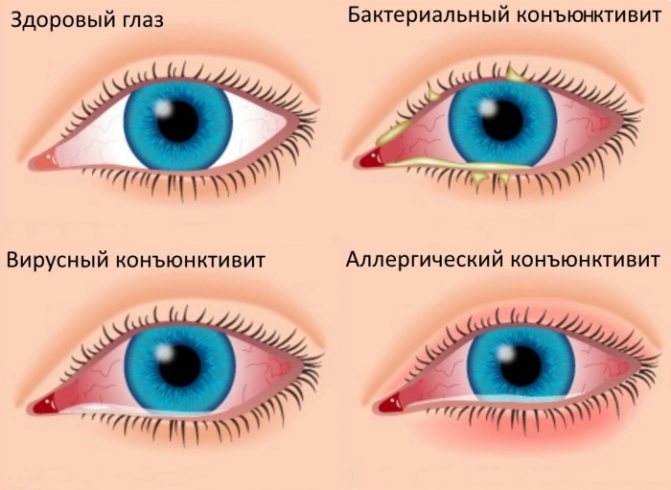
Conjunctivitis is an inflammation of the visual organs
Washing is carried out for 10 days two to three times a day.
- Drops. They provide disinfection. Infants under 12 months of age are instilled with a 10% Albucid solution.
- Ointments. They disinfect perfectly and bring quick relief. Tobrex, erythromycin ointment, helps a lot. Both eyes should be treated, even if only one is watering. Inflammation quickly jumps from the diseased eye to the healthy one. You should be safe.
Protect household members with conjunctivitis from babies to avoid infection!
You cannot diagnose and treat conjunctivitis on your own. It can easily be confused with another disease that also causes watery eyes in children. This disease is called dacryocystitis.
Prevention
In order to have to resort to ophthalmological treatment as little as possible, it is necessary to constantly maintain visual hygiene. The child should be taught this from early childhood. Very important:
- Identify visual impairments in a timely manner and select appropriate optical devices.
- Maintain correct posture when reading and writing.
- Do not bring a book, phone or other media too close to your eyes. The optimal distance is approximately 40 cm. This position will not strain the eyes unnecessarily, but will create an adequate load.
- Monitor the lighting, which ideally should be like this when reading and writing: an overhead light source (chandelier) plus an additional one on the left side.
- Eat rationally. Consume regularly and in sufficient quantities fruits and vegetables, animal protein, and various cereals. Eyes also need vitamins and minerals.
- In case of prolonged stress on the visual organs, give them a rest every 45 minutes at least, switching to other types of activity (it is better if visual stress alternates with physical stress).
- Maintain personal hygiene:
- use only your own cosmetics and towels;
- do not touch or rub your eyes with unwashed hands;
- Always remove lenses at night and treat them properly;
- go to the ophthalmologist for preventive examinations once a year so that the slightest deviations are diagnosed on time.
These simple recommendations are relevant for both children and adults. By adhering to them, you can maintain eye health and good vision for many years.
So, if your child has watery eyes, the problem should not be taken lightly. Not only health, but also the quality of vision depends on this. It is necessary to determine the cause as soon as possible and take measures to eliminate it; this is the only way to avoid complications and other negative consequences. A professional eye doctor can help with this.
Date: 04/23/2015.
Updated: 10/02/2018
Dacryocystitis
This is a congenital disease. The inner corners of the eyes are equipped with microscopic holes - canals. They are covered with a membrane while the baby is in the womb. At the moment of birth, the tubules open. At the moment of the first breath, the membrane ruptures, clearing the way. If the baby's tear ducts remain closed, the exit for tears is blocked. They stagnate and lead to a disease called dacryocystitis. It is easy to confuse it with conjunctivitis, but there is one distinctive sign - with dacryocystitis, only one eye is watery, the channel of which remains blocked.
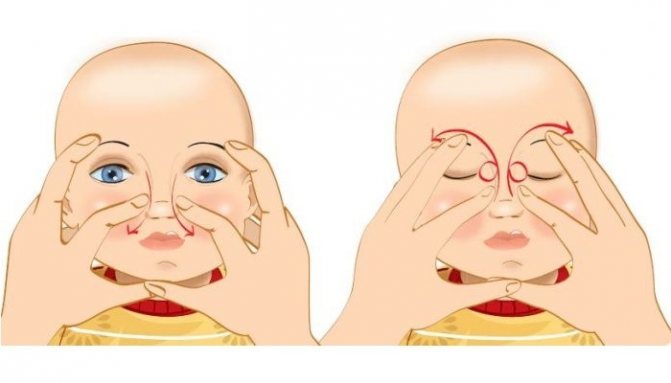
Massage often gives positive results in the treatment of dacryocystitis
Dacryocystitis is usually detected in the first or second month of a child’s life. Parents notice stagnation of tears and grains of pus.
There are several treatment options. First, the doctor prescribes gentle therapy, the goal of which is to achieve a breakthrough of the lacrimal canal without probing.
- External rinsing. To do this, use a solution of “Furacilin” or “Levomycetin”. The course of treatment is 2 weeks.
- Massage. Light pushes from the bottom up, aimed at the lacrimal sac, often give a positive result.
- Probing the duct. If the two above procedures do not produce results, the doctor resorts to more radical methods.
Under local anesthesia, a probe is inserted into the lacrimal canaliculus and pulled through the lacrimal ducts. Then the paths are treated with a disinfecting solution. As a rule, such flushing solves the problem. It lasts about 10 minutes. Repeated intervention is required in rare cases.
It is important to diagnose dacryocystitis as early as possible. Then probing may not be necessary - and simple rinsing will help the tear ducts open.
Tear duct massage
If medication, homeopathy, or folk remedies do not help or provide temporary relief, your baby most likely has a blocked nasolacrimal duct. This disease is also called 'dacryocystitis'.
If, during an examination by a pediatrician (ophthalmologist), the child was diagnosed with dacryocystitis, or stenosis of the nasolacrimal duct, then he will be scheduled for a planned procedure for probing the lacrimal ducts.
But this manipulation can be avoided if the child massages the lacrimal sacs several times a day (before each feeding).
Massage stimulates the outflow of tears and improves the patency of the nasolacrimal canal. There will not be a quick effect, but if you massage your child daily, probing may not be necessary. The patency of the tear ducts will be restored and lacrimation will go away on its own.
Before performing lacrimal sac massage:
- you need to wash your hands with soap,
- cut your fingernails short,
- the baby should be in a good mood, so it is best to perform a massage after feeding, when the baby is full and happy.
Massage is not performed if:
- the child has a high temperature,
- he is capricious and anxious for no apparent reason.
Before performing a massage, it is necessary to treat both eyes. Soak a cotton pad in warm boiled water or furatsilin solution, remove tears and pus. You need to use a separate cotton pad for each eye. We wash from the outer edge of the eye to the inner.
If the child feels well, place the baby on the changing table (do not leave him unattended!) and begin the massage:
- 1. Apply gentle pressure from top to bottom, starting from the upper inner corner of the eye. First we massage one eye, then the other. We perform ten movements from top to bottom, and one movement in the opposite direction, from bottom to top, for each eye,
- 2. After performing the massage, place drops prescribed by your pediatrician or ophthalmologist into your lacrimal sacs.
Remember that massage of the tear ducts will bring the desired effect only if it is performed systematically and not occasionally. You need to press gently but firmly on the lacrimal sacs to drive the tears down the nasolacrimal canal.
How not to harm your baby with watery eyes?
- Forget bandages. In case of lacrimation and inflammation, there is no need to apply a bandage to the organs of vision. It is the bandage or gauze that will cause the spread of germs. They will create a cozy place for the proliferation of microorganisms. Complications may arise. Bandaging can also lead to eye injury.
- Unsanitary conditions. Dirt is the main enemy of children's eyes. Keep it clean. Wash your hands thoroughly before performing procedures. Treat toys with soap. Make sure your baby has her own towel. Boil the pipettes once a day.
If your baby's eyes are watery, be sure to show him to a specialist. Self-medication can provoke the development of complications.
Why does a child's eyes water?
If a child has watering in one eye, this can be caused by a number of different reasons. The most common causes of watery eyes:
- Conjunctivitis caused by a virus or bacteria. If only one eye is watery, this indicates a bacterial nature of the disease, but if both eyes are watery, we are dealing with a viral infection.
- Allergic reaction.
- Acute respiratory disease.
- Blockage of the tear ducts (nasolacrimal duct stenosis).
- Pathology of ENT organs.
- An insect bite or a foreign object getting into the eye.
Also, one of the reasons why a baby’s eye becomes watery may be a reaction to cold and windy weather. This often happens in winter and late autumn during a walk, but after returning home the lacrimation goes away.
